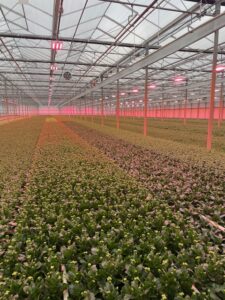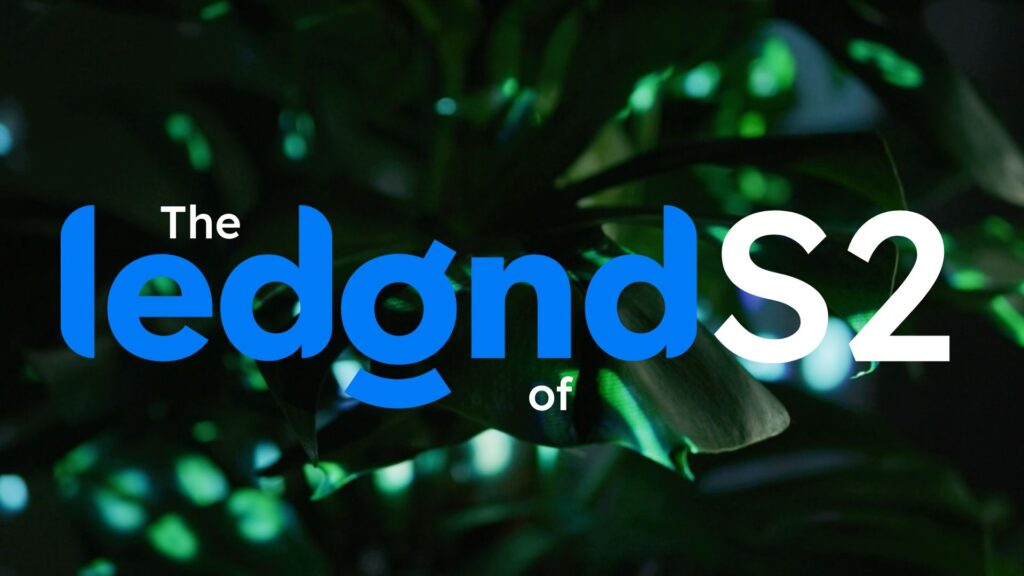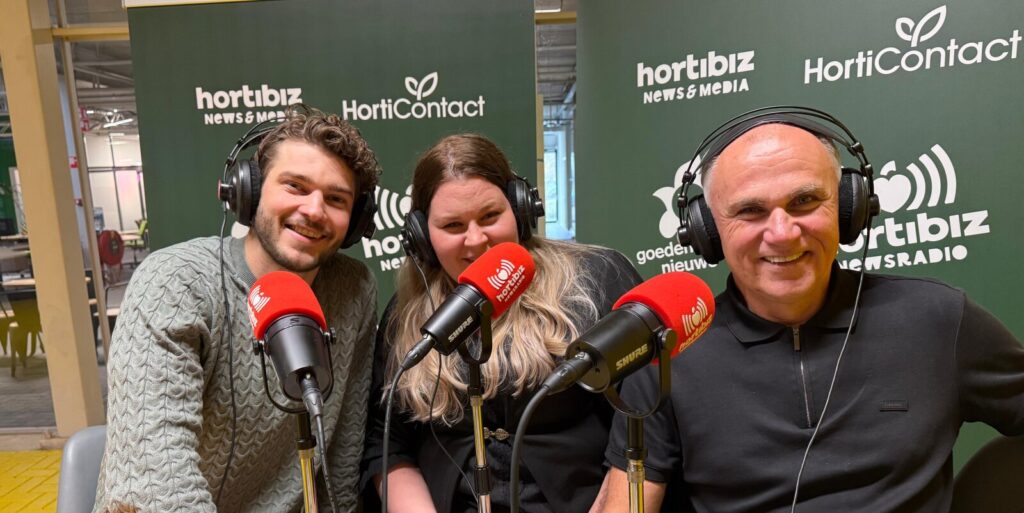Customer Case Zuidgeest Delfgauw
Earlier this year, Zuidgeest Delfgauw made the switch from Son-T to LED lighting. To select the optimal lamps and secure subsidies, the cucumber grower sought comprehensive guidance from Ledgnd. The results were indeed impressive.
Ledgnd assists Zuidgeest Delfgauw with their transition to LED
Zuidgeest Delfgauw is a family-owned business with a strong commitment to sustainability. Each year, they cultivate over 16 million cucumbers on nearly 5 hectares of land.
Three times more light
From 75 PAR under Son-T to 200 PAR under LED
Increased stems
More stems per square meter
Energy savings
Saving on electricity while increasing light levels

Challenge
Zuidgeest Delfgauw specializes in the cultivation of illuminated high-wire cucumbers. The family-owned business, which spans 5 hectares, harvests approximately 16 million cucumbers annually. Previously, this cultivation was done under Son-T lamps, but in early 2024, they transitioned to LED lighting. “We place a high value on sustainability,” explains Mike Zuidgeest regarding the change. But how do you choose the right lamps at that point? “We were overwhelmed by the options. We wanted to switch to LED, but one supplier offers a certain percentage of red, blue, and green light, while another supplier takes a completely different approach. We need specific spectra that are not required for tomatoes, such as far-red light. Without far-red light, cucumber plants do not grow or stretch properly; it’s essentially useless. The first supplier we spoke with provided a quote for a lamp without dimmable far-red light. The next supplier did offer it, but where do you start? We wanted dimmable light, but it comes with an additional cost. Moreover, the efficiency needs to be higher.”
Solution

The cucumber nursery turned to Ledgnd for advice, which ultimately led them to choose lamps with dimmable far-red light. “Ten percent is dimmable, and that ten percent can either be converted into PAR light or saved on energy consumption,” explains Mike Zuidgeest. According to the entrepreneur, this decision has proven effective in practice. “We are very satisfied with the initial harvest under LED. The Son-T lamps were delivering about 75 micromoles after five years. When we installed these LED lamps, the PAR meter suddenly read 200 micromoles. That’s nearly three times more light with the same power input!” Zuidgeest initially doubted whether this would be reflected in the plants. “I wasn’t very confident at first, but within three to four days, the plants began to grow, and the fruits started developing exceptionally well. Since then, it hasn’t stopped.”
In addition to advising on the lamps, Ledgnd also assisted the cucumber company with applying for a GMO subsidy. “A GMO subsidy was available for replacing Son-T with LED, but it required energy savings. Ledgnd calculated what we could achieve in this regard. Son-T lamps require 1,040 watts to start and then 1,000 watts to maintain. The LED lamps use slightly less than 1,040 watts, allowing us to save on energy while achieving nearly three times as much light in the greenhouse.”
Results
Now that the first harvest cycle since the installation of the LED lamps is complete, Zuidgeest can only be positive. “So far, it’s been excellent; we haven’t encountered any cultivation problems, and I hope we won’t in the future. With more sunlight approaching in the summer, it should only get easier.” Additionally, while the growth rate of the plants has remained virtually the same since the switch from Son-T to LED, Zuidgeest notes that the nursery was previously able to achieve a higher stem density per square meter. “That’s a valuable lesson for next year, allowing us to plant more per square meter even earlier and harvest sooner.”
When we installed these LED lamps, the PAR meter suddenly registered 200 micromoles. We are now saving on electricity while achieving three times the light intensity in the greenhouse.
Increase your light output and reduce energy costs.
Contact us now
"I’m really enthusiastic. It’s a young company that looks at things from a different perspective. I found that very pleasant and refreshing. I was very biased when it came to brands, but Ledgnd gave me clear insight into the differences between providers. Moreover, Ledgnd also carefully reads the fine print, which reveals more guarantees and possibilities. If I had to rate the company, I would definitely give them a 9!"
Read more from our news and knowledgde base

Ledgnd launches season 2 of video series “The Ledgnd of”
Ledgnd has launched the second season of its video series “The Ledgnd of”. The series takes a closer look at the key concepts and innovations shaping modern greenhouse horticulture. In the new season,…

Ledgnd at Hortibiz Next Level Data: From data to action
During the theme week “Next Level Data, Artificial Intelligence and Robotics” by Hortibiz News Radio, Ledgnd joined the table to talk about one key question: how do you turn all greenhouse data back i…

Duijvestijn, Ledgnd and Gavita International continue collaboration on LED optimization
Following the success of the first LED optimization trial at Duijvestijn Tomaten in Pijnacker, Duijvestijn, Ledgnd and Gavita International are launching a second research phase to be conducted over t…
Do you want to know more?
Curious about what Ledgnd can do for you? Leave your phone number, and we’ll get in touch as soon as possible for a no‑obligation informational chat.

